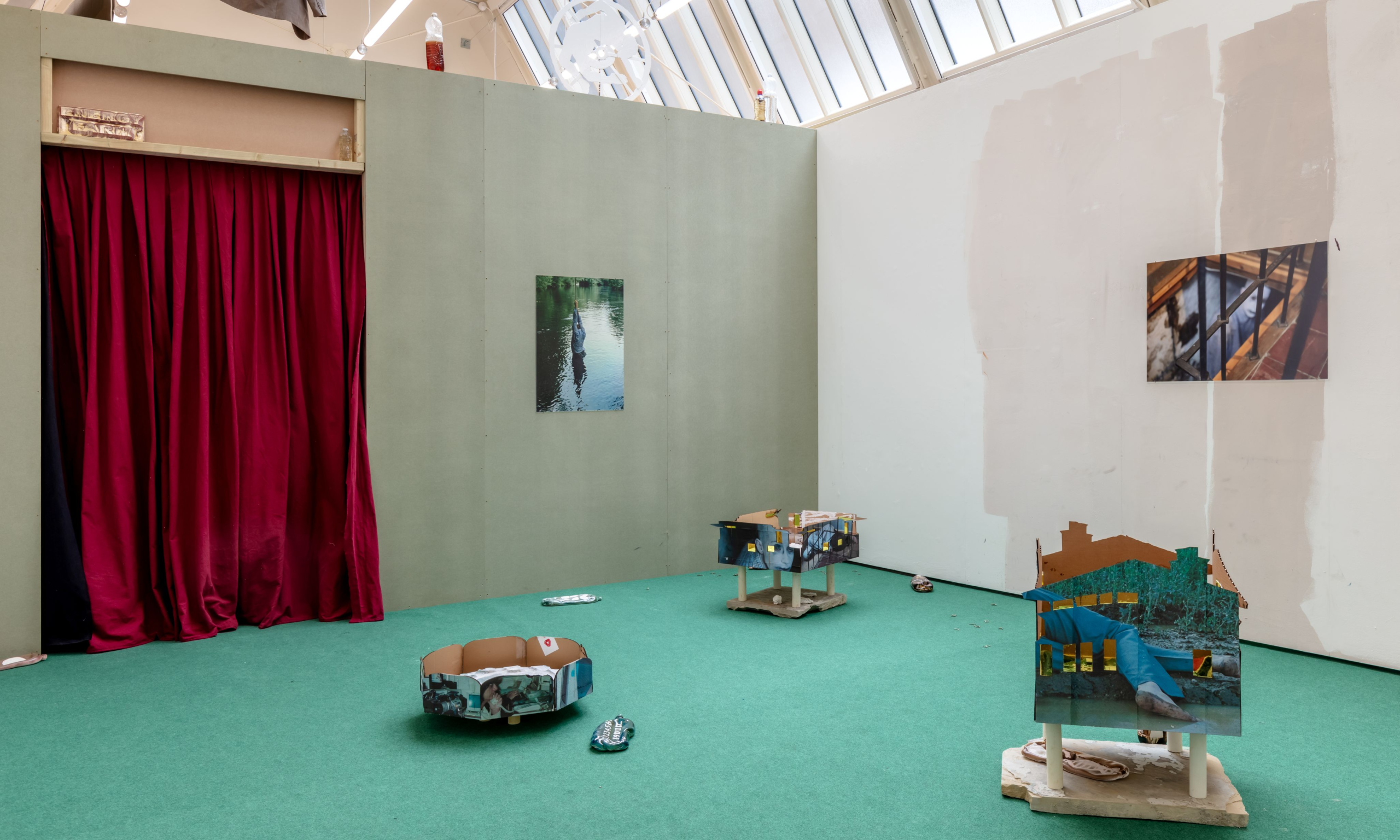Jame St. Findlay, Installation View, RA Schools Show 2024
Photography by Jack Elliot Edwards
The Scottish artist Jame St Findlay has won the Claridge’s Royal Academy Schools Art Prize. The prize, now in its second year, sees £30,000 awarded annually to a graduating student at the Royal Academy Schools (RA) in London, and includes a solo exhibition supported by Claridge’s hotel.
“The Royal Academy and Claridge’s are both committed to supporting artists at a time when fees for higher education are skyrocketing and the costs of artists’ studio spaces in London are now out of reach,” says a joint statement. RA Schools, part of the Royal Academy since 1769, offers a free three-year programme to 17 early career artists each year.
Eliza Bonham Carter, the curator and director of Royal Academy Schools, says: “Jame St Findlay is an artist who works with film and sculpture creating ornate, sprawling theatrical installations. Ideas of tragicomedy, codified or broken systems, and industrial and post-industrial landscapes are folded in as forms and subjects, absurd, messy, serious and acerbically witty in turn.”
In an interview with Metal magazine, Findlay says: “As a gay artist, exploring themes of heteronormativity or normalisation, in general, is far more interesting to me than exploring my own queerness; I feel that I live that every day, and I want to use my work as a means of exploring other narratives.” Findlay’s work has been exhibited at Celine gallery and 16 Nicholson Street gallery which are both based in Glasgow.
Last year’s winner, Daria Blum, has launched her exhibition at Claridge’s ArtSpace (Daria Blum: Drip Drip Point Warp Spin Buckle Rot, until 25 October). A three-channel video work shows Blum sorting through a bundle of materials found in a deserted office block. The materials evoke figures from the artist’s past such as her late grandmother, the Ukrainian ballerina and choreographer Daria Nyzankiwska. Blum brings these characters to life in her performances enacted on a walkway raised above the floor.
“In an evocative dialogue with the subterranean architecture of the gallery, the site-specific installation further evolves Blum’s research into the relationship between physical space and muscle memory, choreography and embodiment, and notions of institutional power as they relate to dance and architecture,” says a project statement.

